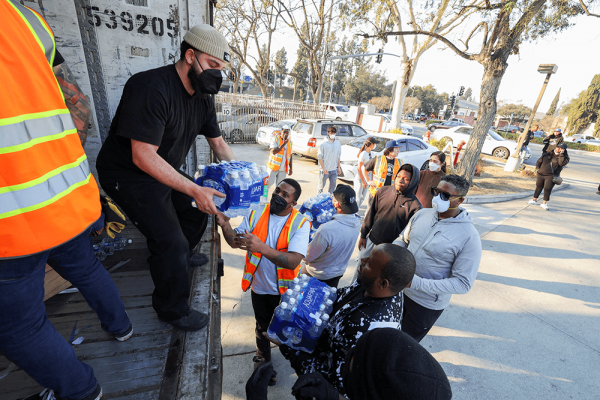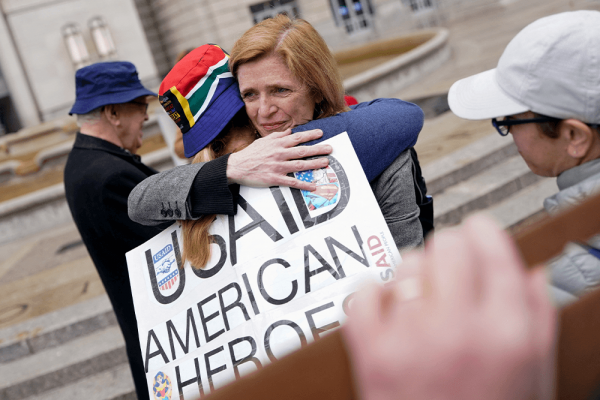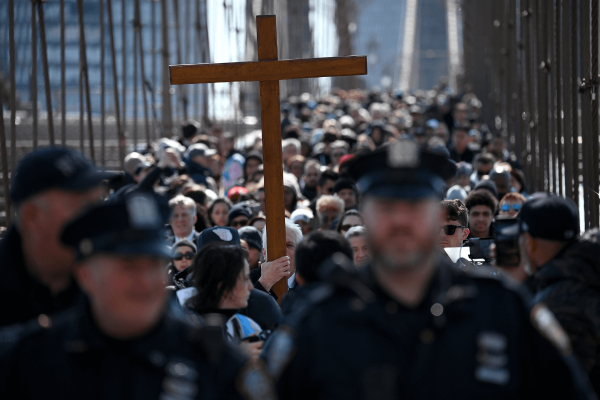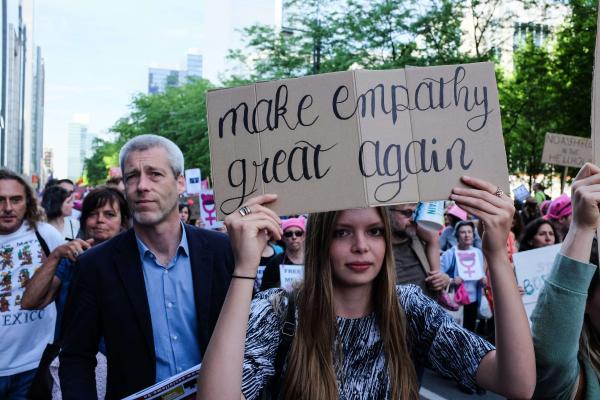When activists like me return from visiting the Afghan Peace Volunteers in Kabul, Afghanistan, young seamstresses there often entrust each of us with about 50 sky-blue scarves. The words “border free” are carefully embroidered in English on one end of each scarf and in Dari, the language they speak, on the other side. The scarves are clear expressions of their yearning to end four decades of war in Afghanistan.
“We are the generation who must try to put an end to all war and violence,” wrote Nematullah, an Afghan Peace Volunteers member who teaches children from internally displaced families. His students, most of them displaced by war, live in a refugee camp.
This was a response to a letter I wrote to the volunteers on May 31, after the truck bombing in Kabul that killed more than 150 people.
Happily, the letter brought good news.
“We’re all safe,” wrote Hakim, who mentors the Afghan Peace Volunteers. “Yet we don’t want to ‘get used’ to life in a war zone. War is brutal, and begets more war, again and again.”
working_on_a_permaculture_plot_at_kabul_university.jpg

Over the following days, dozens of Afghans were killed in attacks across the country. In Kabul, at least four protesters were killed by Afghan armed forces. They were calling on the Afghan government to provide greater security for the people. The next day, three suicide bombers attacked a funeral for one of the protesters, killing five people and wounding 119.
Some reports say that Kabul has been shut down. Yet sit-ins are being held in multiple spots, across the city, calling on the government to fulfill its role in helping protect people.
Their determination is remarkable.
Hakim reminded me that although violence exists in Afganistan, most of Afghanistan’s estimated 30 million people at peace with each other.
“In reality, government services are insufficient or non-existent, so it is people and communities that are making things work day to day,” said Hakim.
People like the Afgan Peace Volunteers.
Without any input from the centralized government, the Afghan Peace Volunteers build community and share resources. They steadily develop ways to connect with young people in other Afghan provinces. Within Kabul, they arrange inter-ethnic activities and projects, distribute food, educate children, and manufacture heavy blankets to help families survive the harsh winters. They risk their lives to relate with people whom they are told are their enemies.
apvs-are-sewing-this-for-mothers.jpg
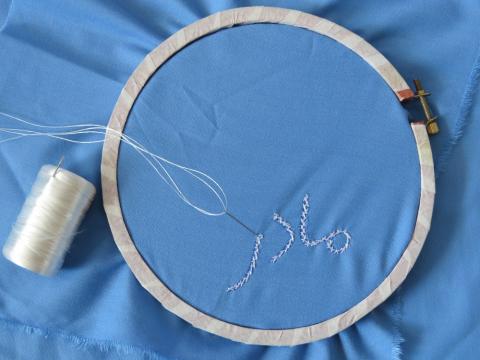
Warlords from the West, led by the United States, take a dim view of Afghanistan interacting with neighboring countries Iran, China, and Pakistan. One of the reasons the United States spends so much to maintain bases, weapons, special operations forces, surveillance systems, and detention facilities within Afghanistan is because it wants to communicate a strong message to these neighbors.
“Afghanistan, for Americans, doesn’t really exist as a country and a people,” writes William Astore, a retired lieutenant colonel with the U.S. Air Force. “It exists only as a wasteful, winless, and endless war.”
Instead of tolerating endless war in Afghanistan, we need to demand that the United States pay reparations for the suffering and destruction it has already caused. We need to learn from the generation of young volunteers, from seamstresses to mentors, trying to put an end to war.
Got something to say about what you're reading? We value your feedback!

